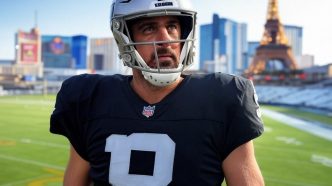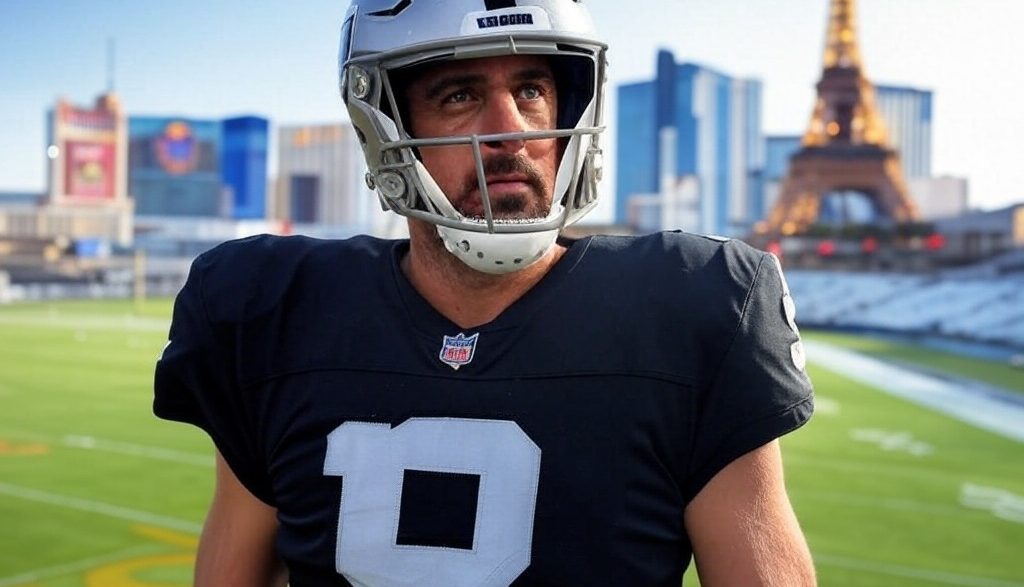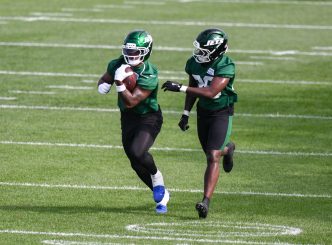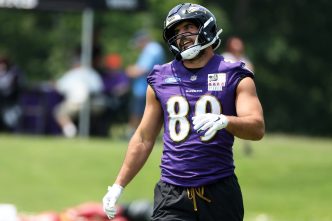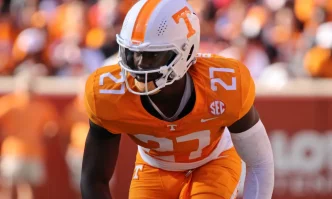After a tumultuous two-year stint with the New York Jets—marked by injury, inconsistency, and organizational upheaval—Rodgers, now 41, might be on the move again. For the Raiders, a franchise desperate for stability at the quarterback position, this could be the bold swing they need. Let’s dive into how this trade could come together, what it might look like on the field, and its broader implications.
The Trade Scenario
Picture this: it’s late February 2025, and the Jets, sitting at 5-12 after another disappointing season, are ready to cut ties with Rodgers. His 2025 contract carries a $23.5 million cap hit, but it’s non-guaranteed, giving New York flexibility to move on. Meanwhile, the Raiders, fresh off a 4-13 campaign with Gardner Minshew and Aidan O’Connell failing to inspire, hold the No. 6 pick in the draft but miss out on top quarterback prospects like Shedeur Sanders or Cam Ward. Enter GM John Spytek, who sees Rodgers as a bridge to stabilize the position while grooming a future successor.
The deal could look like this: the Jets send Rodgers and a 2026 fifth-round pick to the Raiders for a 2025 third-round pick and a conditional 2026 second-rounder (upgradable to a first if Rodgers hits incentives like a playoff berth). Las Vegas absorbs Rodgers’ $9.5 million base salary—manageable with their projected $92 million in cap space—while the Jets eat some dead money to facilitate the trade. It’s a low-risk, high-reward move for the Raiders, who avoid overpaying in draft capital for an aging star, and a clean break for New York, which pivots to a full rebuild.
On-Field Fit
Rodgers steps into a Raiders offense with untapped potential. Davante Adams, recently traded to the Jets in 2024, might not be in Las Vegas, but the team still boasts weapons like Brock Bowers, a rising star at tight end, and Jakobi Meyers, a reliable wideout. The offensive line, while not elite, has improved under new coaching, and the running game—led by a re-signed Zamir White—could ease pressure off Rodgers’ arm. Head coach Antonio Pierce’s gritty, player-first approach aligns with Rodgers’ competitive fire, though his freelance tendencies might test offensive coordinator Chip Kelly’s structured system.
At 41, Rodgers isn’t the MVP of old, but his 2024 stats (3,897 yards, 28 touchdowns, 11 interceptions) show he can still sling it. His cerebral play could elevate an offense that ranked near the bottom in efficiency last season. Pair him with a stout defense anchored by Maxx Crosby, and the Raiders might climb from cellar-dweller to wildcard contender in a wide-open AFC West, where the Chiefs remain dominant but the Chargers and Broncos are inconsistent.
Cultural Clash or Chemistry?
Here’s where it gets tricky. Rodgers brings baggage—his ego, penchant for controversy, and resistance to coaching directives could clash with Pierce’s no-nonsense style. Las Vegas thrives on camaraderie, not drama, and Rodgers’ history (think Jets dysfunction or Packers exit) suggests he demands control. Yet, there’s a flip side: Crosby has publicly courted Rodgers, calling him “legendary” on his podcast in March 2025, signaling locker-room buy-in. If Rodgers embraces the Raiders’ underdog identity and Pierce cedes some play-calling freedom, this could spark a cultural renaissance in Sin City.
The Tom Brady factor adds intrigue. As a minority owner, Brady’s influence in the front office is growing, and his competitive history with Rodgers could push him to greenlight the deal, envisioning a splashy veteran to pair with a rookie like Jake Retzlaff, drafted later in 2025. Rodgers mentoring a young QB while chasing one last playoff run? That’s a narrative Brady might love.
The Bigger Picture
For the Raiders, this trade is a calculated gamble. They’ve whiffed on quarterbacks for years—Carr, Garoppolo, Minshew—and Rodgers offers a two-year window to compete without mortgaging the future. If he falters, they’re not tied to a long-term deal; if he succeeds, they could snag their first playoff win since 2002. For Rodgers, it’s a chance to stick it to the Jets, face the Packers twice a year in the NFC, and chase a second ring in a new market hungry for relevance.
The ripple effects? The Jets accelerate their rebuild, targeting a QB like Jalen Milroe in 2026. The AFC West tightens, with Denver and LA eyeing Rodgers warily. And the NFL gets another dose of Rodgers drama—perfect for headlines and Netflix specials.
Conclusion
An Aaron Rodgers trade to the Las Vegas Raiders in 2025 is a long shot but not implausible. It hinges on mutual desperation: the Jets wanting out, the Raiders wanting up. On paper, it’s a fit—talent meets opportunity, veteran savvy meets youthful potential. In reality, it’s a high-stakes bet on an aging star’s final act. If it works, Vegas becomes must-see TV. If it flops, it’s another chapter in the Raiders’ quarterback saga. Either way, the idea of Rodgers in Silver and Black is a tantalizing “what if” for the 2025 offseason.

